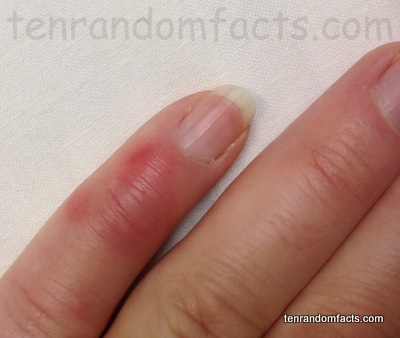Itchy pains…
- Chilblains are also known as ‘pernio’ or ‘perniosis’.
- Chilblains are an abnormal reaction caused from being cold, or lack of blood circulation, or both, and usually occur on the extremities of the body, especially on toes and fingers, and sometimes on the nose and ears, due to the body using its warmth to keep vital organs functioning properly.
- Blood vessels contract when you are exposed to cold, and then they expand back to normal when you are exposed to heat, and if, during this contracting and expanding process, the blood vessels leak blood, the result is a chilblain.
- Chilblain symptoms include red, blue or purple swollen skin, blisters, itching, tenderness and pain.
- Chilblains usually heal after one to two weeks, depending on whether the body is kept warm and there is no further exposure to the cold.
- In medieval times, an egg, wine and fennel root mixture would be applied to help cure chilblains.
- Females are more likely to get chilblains than males, and some groups of people are more susceptible to chilblains including elderly people, smokers (due to nicotine that causes poor blood circulation), those with a family history of chilblains, people that are underweight, or those that have circulation or blood vessel problems.
- Chilblains can cause the skin to dry and crack, or can cause ulceration, both of which can be very painful and can become infected.
- There is no satisfactory cure for chilblains, and it is better to prevent them in the first place, by having good blood circulation which can be improved with extra exercise, no smoking, and a healthy diet, and keeping one’s body temperature warm, with warm socks, gloves and other warm clothing, and keeping away from cold weather or temperatures.
- Then are many suggested remedies for treating chilblains, including topical steroid cream (which is not advisable) and a medicine called nifedipine which dilates the blood vessels, however most of them do not work or not very satisfactorily, so if you are affected by chilblains, it is recommended that you keep your body temperature warm and resist the urge to itch the chilblains (as this leads to cracking and infection).






Horrible things chilblains! Came to Qld so I wouldn’t get them any more … but it’s been too cold to keep them away this year!